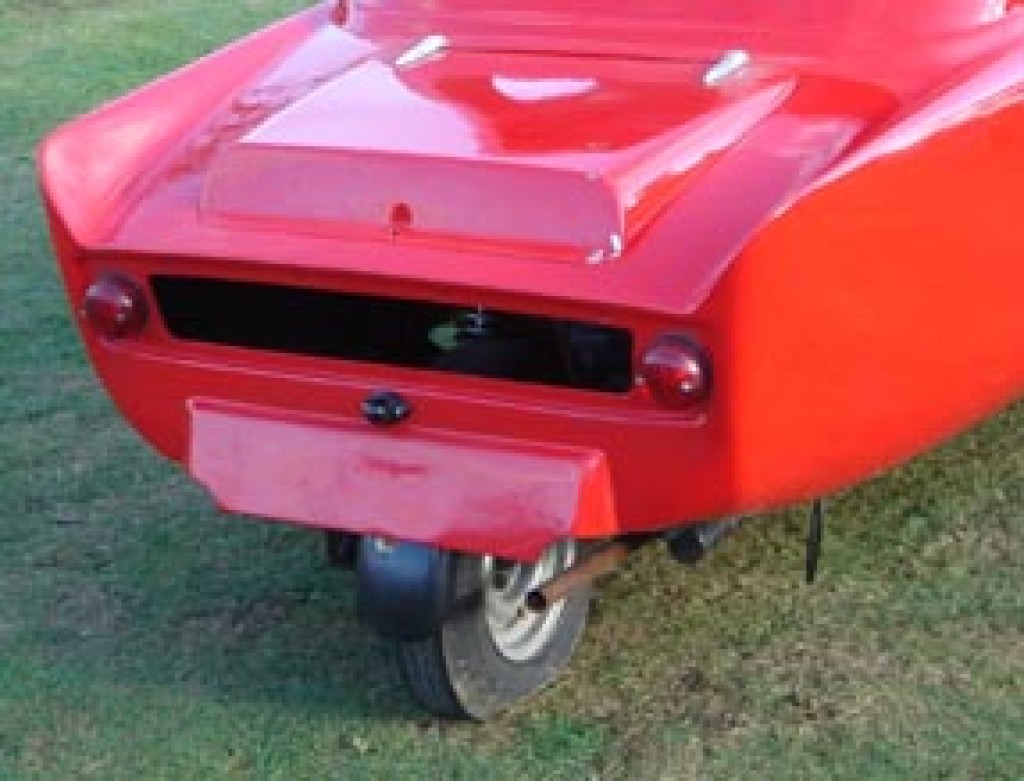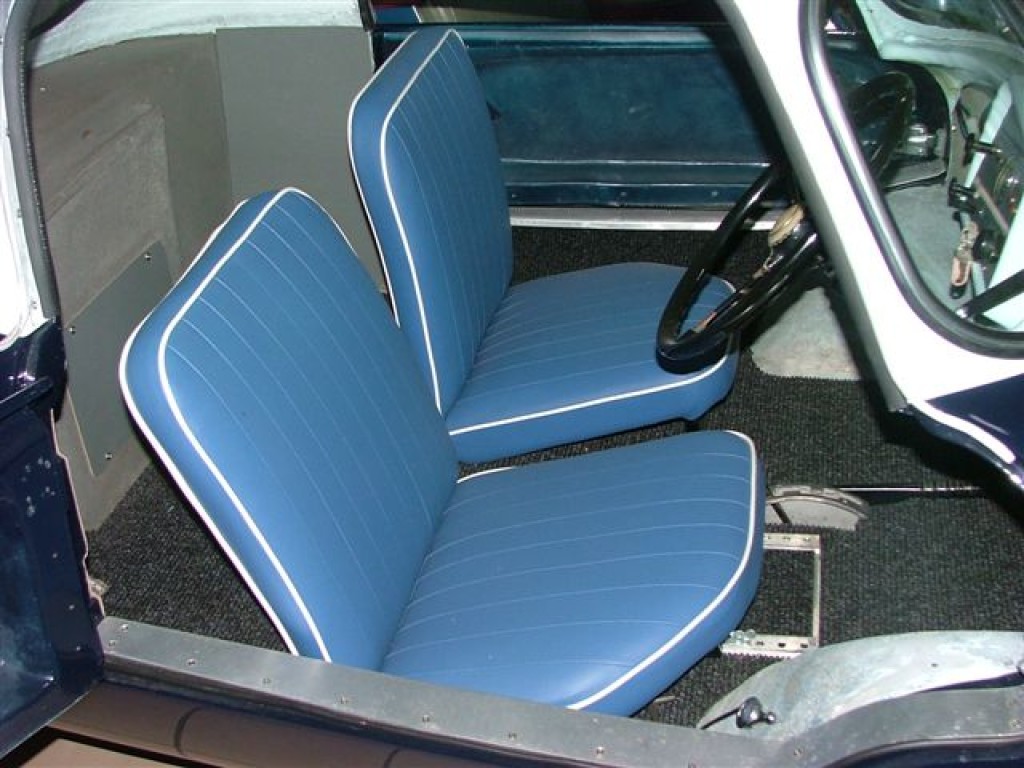The first three-wheeled Frisky was the "1959 Family Three", by Frisky Cars Ltd, this was announced at the Earls Court Motor Show of 1958 and went into production in October 1958. Production only lasted for a short time ceasing in July 1959 due to financial problems that put the company into liquidation. In August, Frisky Cars (1959) Ltd was formed.
The Family Three had been undergoing several design changes earlier that year under Frisky Cars Ltd. This being brought about following a suggestion by Keith Peckmore to Gordon Bedson that the original was a little underpowered. The first Mark 2 car WDA 342 was registered on 22 May 1959 and followed closely by the second Mk2 YUK 66 which was registered on 30 May 1959 but production was thwarted by the company's financial problems. On the 17th December, 1959 Frisky Cars (1959) Ltd issued a Press Release announcing that after considerable modifications the Frisky Family Three (the Mark 2) was back in production at the Meadows Fallings Park Works in Wolverhampton.

The first Family Three Mk2 as tested by "MotorCycling"
In November 1959 a Family Three Mk 2 "off the production line" with only 6 miles on the clock was given to "MotorCycling" to test who praised its stability, braking and road-holding also adding that it was lively to drive, a good starter and had comfortable seats. The test car was, in fact, YUK 66 that had been built and registered on 30 May 1959.

Rear View of the first Family Three Mk2
Whilst at first glance looking very similar to the original 1959 Family Three, the Mk 2 car tested by "MotorCycling" incorporated several significant changes.
The body was very similar to the original Family Three. The most obvious change was the introduction of a substantial "hatch" in the rear slope of the body.

Restricted rear hatch access
This was intended to give access to the engine, fuel system, rear suspension and battery. Unfortunately, it only gave users access to the fuel tank.
The doors remained the same, stopping approximately 2 inches short of the wheel arches, but below them, the raised side moulding line has been removed.

The new extension accommodates the rear wheel and number plate
Overall the body was still the same size but a small box section had been added at the rear to accommodate the longer wheelbase. It also served as a surface to mount the number plate.
Outside fittings, including the lights and side-mounted Lucas indicators, were the same as the 1959 Family Three and Coupe along with corner front and rear half bumpers (A few early cars had a single plain full-width front bumper).
Inside the car, the bench seat was replaced by two individual Vynide covered front seats and two small fixed child seats were offered for the rear but it soon became very obvious that even with the engine moved back there was still not really enough room to accommodate them. Very few were fitted.

Twin front seats ( also note "Albion" gear change rack)
The rear bulkhead of the cab was now virtually flat and so access to the engine from the cab had been reduced to a small removable panel. The battery was relocated from the cab area into a cradle alongside the engine
The wheel arches, flooring and rear wall were covered in a grey coarse-grained felt-backed plastic the door pockets, rear side panels and instrument panel being covered in a matching fabric.

Dash now has moulded trays either side of instruments
The Lucas equipped Dash remained unchanged from the 1959 Family Three and Coupe.
Either side of the Instrument panel was a moulded flat tray similar in design to the aluminium ones in the FriskySport. The roof interior is finished with a white plastics foamed lining.
The original Family Three's front suspension the McPhearson strut had given problems, so the Mark2 went back to the Dubonnet type rubber in torsion suspension as used on the original Frisky Sport.

The extended Chassis and Dubonnet front suspension
To give more room in the passenger area the engine was re-located completely into the tail section. To accomplish this the chassis had been lengthened by 8.5 inches which in turn increased the wheelbase.
The rear suspension used twin Armstrong swinging arms with hydraulically damped coil springs and all three road wheels were now interchangeable, with easy access to the rear wheel.
As standard, the Excelsior Twin TT-250cc replaced the former Villiers 9E and the larger TTI-328cc was available as an option. These had the advantage of being coupled to an Albion four-speed gearbox, three forward and a "real" reverse gear a feature not available previously. However the popular twin 325ccVilliers 3T was still available if required but used for reversing the Siba Dynastart system.
The production of the Frisky Family Three Mark2 continued on through 1960 but sales were not good. On the 20th January 1961 in an attempt to boost sales a further modification of the Family3 Mark2 was revealed renamed The Frisky Prince.

Frisky Family Three Mk2 now on display in the Eppelheim Collection